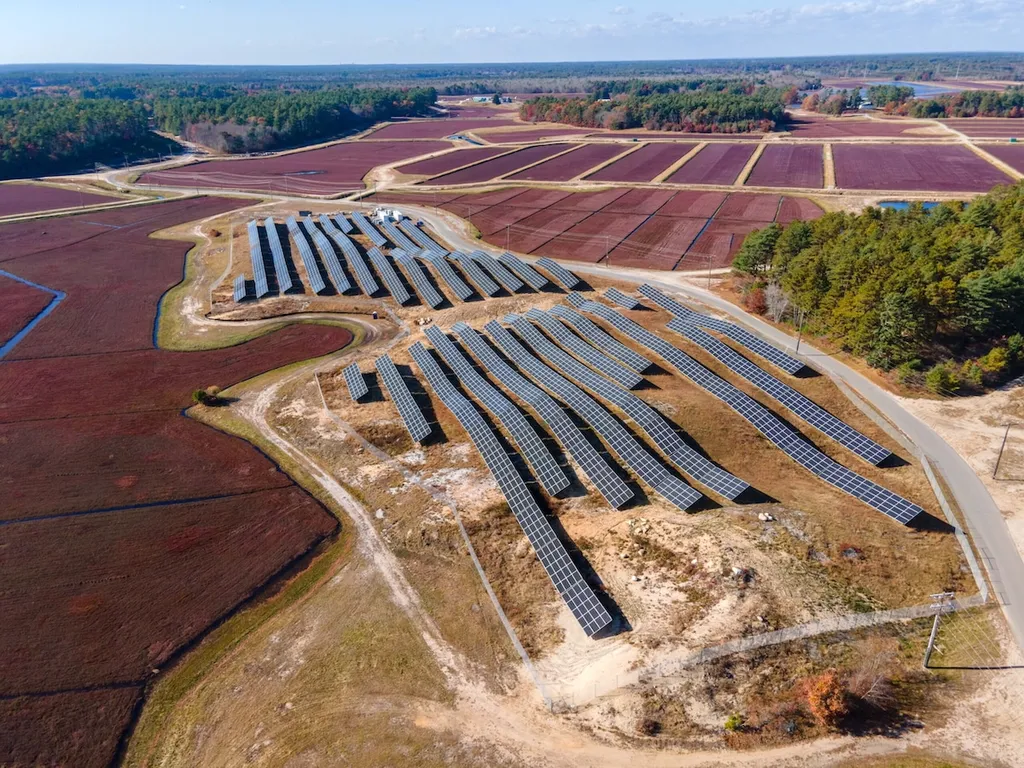In the heart of Massachusetts, a unique experiment is unfolding, one that could redefine the future of cranberry farming and sustainable agriculture. Researchers at the University of Massachusetts-Amherst have been exploring the impact of agrivoltaic systems—where solar panels and crop production coexist on the same land—on the growth and physiology of ‘Howes’ cranberry plants. Their findings, recently published in *Frontiers in Horticulture*, offer a nuanced look at the trade-offs between shade and productivity, with significant implications for the agriculture sector.
Agrivoltaic systems promise a sustainable solution for optimizing land use, but the effects of shading from solar panels on cranberry plants have been largely unknown. Manu Priya, the lead author of the study and a researcher at the Cranberry Station of the University of Massachusetts-Amherst, explains, “Understanding these interactions is essential for assessing the feasibility of agrivoltaic systems in cranberry production.” The study evaluated how different levels of shading—ranging from 30% to 37%—affected key physiological and biochemical parameters of cranberry plants in the year following the installation of solar panels.
The results were revealing. Moderate shading levels (30% and 35%) alleviated environmental stress, as evidenced by improved leaf water status and reduced electrolyte leakage. However, these same levels of shading also suppressed key physiological and metabolic functions, including photosynthetic activity, carbon reserve accumulation, and the biosynthesis of stress-related osmolytes and antioxidant compounds. Higher shading (37%) exacerbated these reductions, suggesting a threshold beyond which the benefits of shading are outweighed by declines in assimilate production and secondary metabolism.
This research highlights a critical trade-off: while shading can mitigate environmental stress, it also alters key physiological and metabolic processes. “Minimizing these trade-offs by optimizing row spacing in agrivoltaic systems is crucial to maintaining cranberry physiological status,” Priya emphasizes. The study also notes that commercial cranberry is grown as a continuous plant canopy, meaning there are no interrow spaces for equipment travel. Damage caused by the installation process likely impacted the crop response evaluated in the first year, underscoring the need for multi-year studies to fully understand the dynamics of a dual-use system.
The findings provide the first direct measurements of proline, trehalose content, and electrolyte leakage in cranberry grown under agrivoltaic conditions, offering new insights into the plant’s physiological adjustments to shading. This research could shape future developments in sustainable agriculture, particularly in regions where land use efficiency is a priority. As the agriculture sector continues to seek innovative ways to balance productivity with sustainability, the insights from this study offer a valuable roadmap for optimizing agrivoltaic systems.
The study, published in *Frontiers in Horticulture*, was led by Manu Priya at the Cranberry Station, University of Massachusetts-Amherst, East Wareham, MA. As the agriculture sector looks to the future, this research provides a critical foundation for integrating solar energy generation with crop production, ensuring that both can thrive in harmony.

